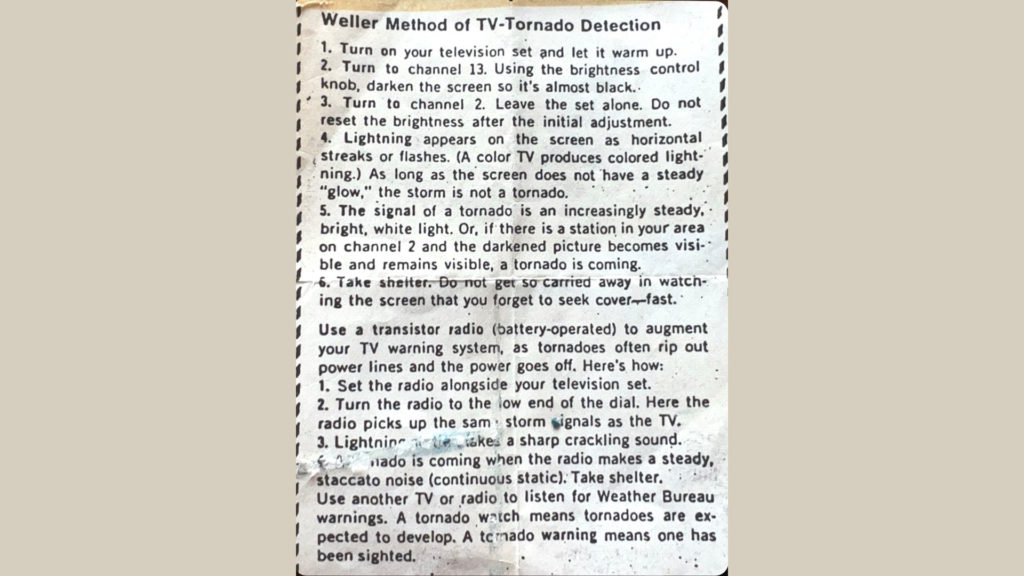The “Weller Method” of TV-Tornado Detection

The Weller method of TV-Tornado detection was a technique used to identify tornadoes using television signals. This method was developed by in the late 1960’s by West Des Moines, Iowa native Newton Weller, an electronics engineer, who was interested in finding a new way to detect tornadoes.
In the past, tornadoes were detected using radar and visual observation, but the Weller method offered a more innovative and efficient approach to identifying these dangerous storms.
How does the Weller Method Work?
The Weller method of TV-Tornado detection is based on the fact that tornadoes create a low-pressure zone which affects the TV signals being broadcasted in the affected area. When a tornado forms, it creates a pressure drop in the atmosphere which reduces the signal strength of TV transmissions. This phenomenon is known as tropospheric ducting.
The Weller method works by comparing the strength of TV signals on two channels: Channel 2 and Channel 13. These channels were chosen because they operate on VHF frequencies, which are more susceptible to the effects of tropospheric ducting than UHF frequencies.
By analyzing the changes in the strength of TV signals, the Weller method can detect the presence of a tornado. Dr. Weller used an algorithm to analyze the changes in the TV signals, which allowed him to determine the direction and speed of the tornado.
Steps for the Weller Method of TV-Tornado Detection
- Turn on your television set and let it warm up.
- Turn to channel 13. Using the brightness control know, darken the screen so it’s almost black.
- Turn to channel 2. Leave the set alone. Do not reset the brightness after the initial adjustment.
- Lightning appears on the screen as horizonal streaks or flashes. (A color TV produces colored lightning.) As long as the screen does not have a steady “glow,” the storm is not a tornado
- The signal of a tornado is an increasingly steady, bright, white light. Or, if there is a station in your area on channel 2 and the darkened picture becomes visible and remains visible, a tornado is coming.
- Take shelter. Do not get so carried away in watching the screen that you forget to seek cover – fast.
Use a transistor radio (battery-operated) to augment your TV warning system, as tornadoes often rip out power lines and the power goes off. Here’s how:
- Set the radio alongside your television set.
- Turn the radio to the low end of the dial. Here the radio picks up the same storm signals as the TV.
- Lightning strikes makes a sharp crackling sound.
- A tornado is coming when the radio makes a stead, staccato noise (continuous static). Take shelter.
Use another TV or radio to listen for Weather Bureau warnings. A tornado watch means tornadoes are expected to develop. A tornado warning means one has been sighted.
Did the Weller Method Work?
While, the Weller method was able to detect a tornado that radar had missed during a series of tornadoes that struck the Midwest in 1974, it was still found to have a high false positive rate. Studies completed by the Weather Service did find it to have a success rate of 10 to 20 percent.